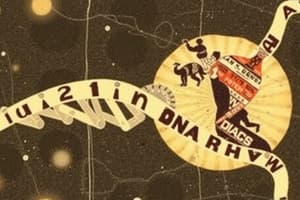Podcast
Questions and Answers
Match the following course codes with their respective subjects:
Match the following course codes with their respective subjects:
CMB 704 = Fundamental Biochemistry DENT 604 = Fundamental Biochemistry MacOS 14 = Operating System Examplify = Testing Software
Match the following individuals with their roles:
Match the following individuals with their roles:
Dr. Maryam Syed = Course Instructor Dr. Raucher = Exam Challenge Recipient Exam Challenge Representative = Collects and justifies exam challenges Apple = Creator of MacOS 14
Match the following software with their compatibility:
Match the following software with their compatibility:
Examplify = Not compatible with MacOS 14 MacOS 14 = Not compatible with Examplify Exam Soft = Compatible with MacOS 14 Apple = Compatible with Examplify
Match the following activities with their time requirements:
Match the following activities with their time requirements:
Match the following numbers with their significance:
Match the following numbers with their significance:
Match the following terms with their definitions:
Match the following terms with their definitions:
Match the following names with the associated course or software:
Match the following names with the associated course or software:
Match the following terms with their descriptions in the context of DNA replication and repair:
Match the following terms with their descriptions in the context of DNA replication and repair:
Match the following terms with their descriptions in the context of DNA replication in Eukaryotes:
Match the following terms with their descriptions in the context of DNA replication in Eukaryotes:
Match the following terms with their descriptions in the context of DNA repair:
Match the following terms with their descriptions in the context of DNA repair:
Match the following terms with their descriptions in the context of DNA replication termination in Eukaryotes:
Match the following terms with their descriptions in the context of DNA replication termination in Eukaryotes:
Match the following terms with their descriptions in the context of DNA repair mechanisms:
Match the following terms with their descriptions in the context of DNA repair mechanisms:
Match the following terms with their descriptions in the context of DNA repair diseases:
Match the following terms with their descriptions in the context of DNA repair diseases:
Match the following terms with their descriptions in the context of causes of DNA strand breaks:
Match the following terms with their descriptions in the context of causes of DNA strand breaks:
Match the following DNA structure terms with their correct definitions:
Match the following DNA structure terms with their correct definitions:
Match the following enzymes with the roles they play in DNA replication:
Match the following enzymes with the roles they play in DNA replication:
Match the following terms with their correct definitions in the context of DNA replication:
Match the following terms with their correct definitions in the context of DNA replication:
Match the following proteins with their roles in DNA replication initiation:
Match the following proteins with their roles in DNA replication initiation:
Match the following terms with their correct definitions in the context of DNA structure:
Match the following terms with their correct definitions in the context of DNA structure:
Match the following terms with their correct definitions in the context of DNA replication elongation:
Match the following terms with their correct definitions in the context of DNA replication elongation:
Match the following proteins with their roles in DNA replication initiation in prokaryotes:
Match the following proteins with their roles in DNA replication initiation in prokaryotes:
Match the following processes with their descriptions:
Match the following processes with their descriptions:
Match the processes involved in Base Excision Repair with their descriptions:
Match the processes involved in Base Excision Repair with their descriptions:
Match the following DNA replication terms with their definitions:
Match the following DNA replication terms with their definitions:
Match the following enzymes with their functions in DNA replication:
Match the following enzymes with their functions in DNA replication:
Match the DNA repair pathways with their descriptions:
Match the DNA repair pathways with their descriptions:
Match the following processes with their phase requirements in DNA Double Strand Break Repair:
Match the following processes with their phase requirements in DNA Double Strand Break Repair:
Match the following terms with their roles in Non-homologous End-Joining (NHEJ):
Match the following terms with their roles in Non-homologous End-Joining (NHEJ):
Match the following DNA bases with their corresponding repair processes:
Match the following DNA bases with their corresponding repair processes:
Match the following DNA replication terms with their descriptions:
Match the following DNA replication terms with their descriptions:
Match the DNA structure properties with their definitions:
Match the DNA structure properties with their definitions:
Match the enzymes involved in DNA replication with their functions:
Match the enzymes involved in DNA replication with their functions:
Match the processes involved in DNA replication with their descriptions:
Match the processes involved in DNA replication with their descriptions:
Match the types of DNA strands with their synthesis process:
Match the types of DNA strands with their synthesis process:
Match the DNA structures with their activity state:
Match the DNA structures with their activity state:
Match the following with their roles in DNA replication:
Match the following with their roles in DNA replication:
Match the type of Topoisomerase with their function:
Match the type of Topoisomerase with their function:
Match the following DNA repair mechanisms with their descriptions:
Match the following DNA repair mechanisms with their descriptions:
Match the following DNA replication terminologies with their descriptions:
Match the following DNA replication terminologies with their descriptions:
Match the following DNA replication processes with their descriptions:
Match the following DNA replication processes with their descriptions:
Match the following DNA damage types with their repair mechanisms:
Match the following DNA damage types with their repair mechanisms:
Match the following DNA replication components with their roles:
Match the following DNA replication components with their roles:
Match the following DNA repair enzymes with their roles:
Match the following DNA repair enzymes with their roles:
Match the following DNA repair processes with their steps:
Match the following DNA repair processes with their steps:
Match the following DNA replication terms with their definitions:
Match the following DNA replication terms with their definitions:
Match the following DNA damage types with their repair mechanism:
Match the following DNA damage types with their repair mechanism:
Match the following DNA repair methods with their descriptions:
Match the following DNA repair methods with their descriptions:
Match the following DNA replication processes with their descriptions:
Match the following DNA replication processes with their descriptions:
Match the DNA repair enzymes with their functions:
Match the DNA repair enzymes with their functions:
Match the DNA replication terms with their definitions:
Match the DNA replication terms with their definitions:
Match the DNA damage repair methods with their descriptions:
Match the DNA damage repair methods with their descriptions:
Match the DNA replication terms with their roles:
Match the DNA replication terms with their roles:
Match the DNA repair pathways with their descriptions:
Match the DNA repair pathways with their descriptions:
Match the DNA damage types with the repair methods that fix them:
Match the DNA damage types with the repair methods that fix them:
Match the DNA repair enzymes with their functions:
Match the DNA repair enzymes with their functions:
Flashcards are hidden until you start studying
Study Notes
Matching Exercises
Course Codes and Subjects
- Match course codes with their respective subjects
Individuals and Roles
- Match individuals with their roles
Software Compatibility
- Match software with their compatibility
Time Requirements for Activities
- Match activities with their time requirements
Significance of Numbers
- Match numbers with their significance
Terms and Definitions
- Match terms with their definitions
Names and Associated Courses or Software
- Match names with the associated course or software
DNA Replication and Repair
DNA Replication
Context: DNA Replication in Eukaryotes
- Match terms with their descriptions in the context of DNA replication in Eukaryotes
Context: DNA Replication Termination in Eukaryotes
- Match terms with their descriptions in the context of DNA replication termination in Eukaryotes
Context: DNA Repair Mechanisms
- Match terms with their descriptions in the context of DNA repair mechanisms
Context: DNA Repair Diseases
- Match terms with their descriptions in the context of DNA repair diseases
Context: Causes of DNA Strand Breaks
- Match terms with their descriptions in the context of causes of DNA strand breaks
DNA Structure
- Match DNA structure terms with their correct definitions
Enzymes in DNA Replication
- Match enzymes with the roles they play in DNA replication
DNA Replication Initiation
Prokaryotes
- Match proteins with their roles in DNA replication initiation in prokaryotes
DNA Replication Elongation
- Match terms with their correct definitions in the context of DNA replication elongation
DNA Repair
Base Excision Repair
- Match processes with their descriptions in the context of Base Excision Repair
DNA Double Strand Break Repair
- Match processes with their phase requirements in DNA Double Strand Break Repair
Non-homologous End-Joining (NHEJ)
- Match terms with their roles in Non-homologous End-Joining (NHEJ)
DNA Repair Pathways
- Match DNA repair pathways with their descriptions
DNA Replication Terms
- Match DNA replication terms with their definitions
Enzymes in DNA Replication
- Match enzymes with their functions in DNA replication
DNA Repair Mechanisms
- Match DNA repair mechanisms with their descriptions
DNA Structure Properties
- Match DNA structure properties with their definitions
DNA Replication Processes
- Match processes involved in DNA replication with their descriptions
DNA Strands
- Match types of DNA strands with their synthesis process
DNA Structures
- Match DNA structures with their activity state
Topoisomerase
- Match type of Topoisomerase with their function
DNA Damage Repair
- Match DNA damage types with their repair mechanisms
DNA Replication Components
- Match DNA replication components with their roles
DNA Repair Enzymes
- Match DNA repair enzymes with their roles
DNA Repair Processes
- Match DNA repair processes with their steps
Studying That Suits You
Use AI to generate personalized quizzes and flashcards to suit your learning preferences.




